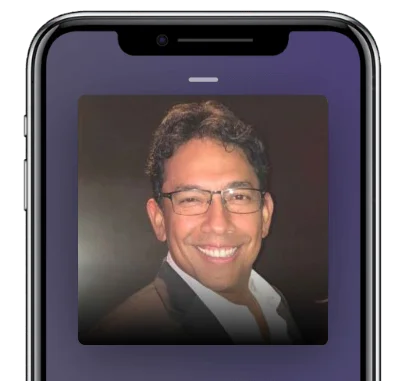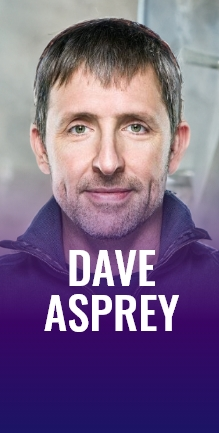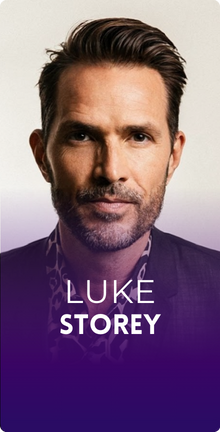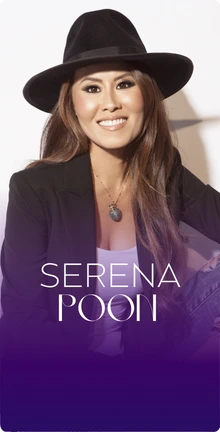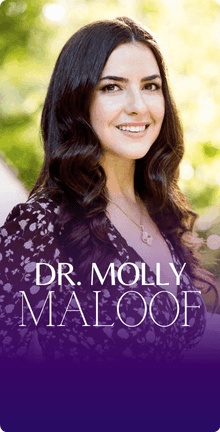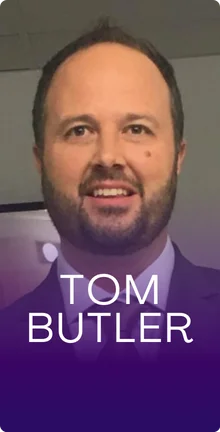In this Episode
- [02:40]Rafael Andrade shares how his interest in biohacking grew and explains three basic modalities he’s using to up-level his life.
- [08:42]Rafael discusses low-level light therapy, the brand he uses, and the frequency at which he uses it.
- [18:46]In what ways does Rafael use the Waking Up app on a daily basis?
- [19:33]Rafael elaborates on the process of self-observation.
- [23:56]Stephan and Rafael discuss illusion, the manipulation of society amongst young people, and their personal experiences.
- [34:18]The importance of paying attention to ourselves and our environment to see glitches and patterns around us.
- [36:58]Rafael and Stephan emphasize their takes on psychedelics.
- [43:32]Rafael explains the concept of God and his view of spirituality.
- [47:10]Stephan shares his perspective and belief, which he considers a gift.
- [52:51]Rafael recalls the lessons he learned from one of his mentors.
Rafael, it’s so great to have you on the show.
Thank you very much for having me, Stephan.
I would love to start with the origin story of your interest in up-leveling and improving one’s life. You were in corporate America and probably doing well. It must have been some sort of epiphany or transformational shift that took you in a different direction. Could you elaborate?
Absolutely. A couple of things came in a sequence that, for lack of a better term, woke me up to observe more of what I was doing. Yes, I was doing well in corporate America. I was traveling the world with my family. I had my family, kids, and a wonderful wife, but I wasn’t very healthy.
Two events happened. A friend gave me a very influential book called Synchrodestiny by Deepak Chopra. It pointed out several things that I wasn’t paying attention to. Soon after, I was diagnosed with a heart condition.
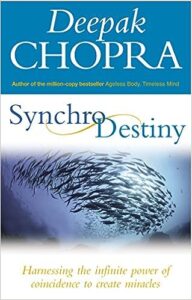
You get a book that opens your eyes and certain aspects of your life, and then you get a diagnosis. You look at your life around, and I was missing a lot from my children’s lives. I wasn’t ready to leave corporate America, but I started looking at other things to do. A third event took place, which surprised me. As a big dagger to my ego, I got laid off after being a top performer. I took that as a sign that I needed to do something different.
I knew I wanted to do something in the health field, to do better. My father is a physician, still practicing. My mother was an educator, and she is retired. There was something that could be done within the medical field to help people prevent disease instead of treating disease.
I started looking at things from ancient wisdom to modern technology. I am an engineer. I like technology and science. I don’t necessarily want to say that I don’t believe in the unseen, but when it comes to taking care of oneself, I need to be able to see results. I took those two together, talked to people I trusted, and embarked on this journey—learning about thick technologies that can help people be more resilient to disease, things that slow us down, and age.
What will be some of the modalities that you’ve worked with personally that you recommend to your clients in terms of things that make them resilient to disease and that help them tap into ancient wisdom?
When I first got involved, there were three modalities. Nutrition is a big part of who we are and what we can and can’t do. There’s so much nutrition information out there that I didn’t want to do something and be another me. Although nutrition is a big part of my life, I didn’t focus on that as far as something I needed to explore as an offering to people around me.
I focused initially on three basic modalities. One of them was our breathing process. We research how our breathing process works. It is obvious that we don’t breathe properly and that we don’t oxygenate properly. We are born very good breathers. But over time, around the age of four to five, when we started going to school, we started sitting around for a long time and wearing tighter clothes; we forgot the breathing process.
I got introduced to the technology of hyperbaric oxygen therapy. I was fascinated by the process. There are modalities within the domain of hyperbaric that are FDA approved, and there are some that are not. Some are specific to the disease, and some are more for longevity and prevention. Depending on who you talk to, some of the science is proven.
It intrigued me, so I started trying it on my own. I have my hyperbaric oxygen chamber. I use it every day for an hour a day, and I started seeing changes within myself. In addition to that, infrared sauna therapy was also something that I was very intrigued by.
Sauna therapy has been around for a very long time. The Scandinavians have been using some sauna technology, whether from natural sources or not, for quite a while. I embarked on that, studied, learned, ended up with my sauna, and used it as part of my daily routine for sweat therapy.
The last one was low-level light therapy. There are several products in the market that are well-known. I started exploring that and seeing how I can use that to improve areas in my body that have either past injuries or aches and pains.
Again, I was doing things in parallel. I was talking to experts, studying, and using it on myself, taking notes, and seeing how I was feeling and how my body was responding to these things. It’s been phenomenal. I’ve been using those three modalities for at least six years as part of my life.
I have a routine every morning: I wake up, get into a chamber, and then get into the sauna. That’s when I listen to all my podcasts and get into all my conference calls. Then I use light therapy and breath work throughout the day, and I feel better than I thought. I’m 51 now. I sleep better. I can do things now that I wasn’t able to do in the past 20 years.
That’s awesome. Congratulations. I’m curious to hear about the technology or brand of the device you use for low-level light therapy. What is that?
As we become aware of our inner selves, we become connected to others, and that's how we get beautiful things done. Share on XRight now, I use a product from LS Pro Systems. It is the one that I’m familiar with. There are many others in the market. It is just the one I acquired a while back, and I’ve just kept it.
There are different modalities. There are very large systems like Joovv. They’re famous because they are this thing you install on a wall and stand before it. The light must penetrate the skin, so you must stand before it with no clothes for five to ten minutes.
There are light therapy beds. Some companies make those light therapy beds, Eleve Health. There are many companies out there. I wasn’t very interested in bigger systems. I was more interested in portable things I could put on me while driving, in my zero gravity chair, or when working. These are more like pads that you can just put underneath and in areas, lower back, around the heart.
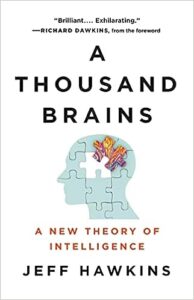
Once it’s in contact with your skin, you immediately feel two things—your blood flow increases in the area. You can feel the blood flow increase. Most people report reduced pain in the area if they have some pain. That makes a lot of sense because light therapy, what it does is part of the process of increasing blood flow. The inflammation tends to go down in the area. When inflammation goes down, all kinds of good things happen. When inflammation goes up, all sorts of bad things happen. It’s interesting how the body uses that light, red and infrared to improve quality of life.
How long are you in the infrared sauna for each day?
Sixty minutes.
So you’re doing an hour in the hyperbaric oxygen chamber and another hour in the sauna?
That’s correct. I get up early.
Do you get much sleep?
Sometimes I do. Sometimes I fall asleep in the chamber because I lay down. I do my meditations with my noise-canceling headphones. I use Sam Harris’ meditation app. The purists will argue that I’m not doing a lot of meditating if I fall asleep, which is right, but it works. I’m going to the meditation and listening to it again when it is over.
I have up to two hours of potentially listening to podcasts, answering emails, or various things. If necessary, you can bring your electronics into these two devices to have conference calls. I don’t just sit there.
Can you do breath work while inside the hyperbaric oxygen, or that’s two very different modalities? Do you do that once you’re out?
No, there’s nothing that says you can’t. My friend Charlie Engle, a common friend of ours, on one of the trips here to Lake Nona, usually when he’s here, he stays with me because he likes to use the chamber and he likes to use the stuff that I have. He asked me that, and I’m like, “You know what, I don’t have it. I don’t know that there’s anything wrong with us,” so he goes in there and does his breath work. I’ve done it myself, too. It does not work better or less; it just feels good.
How did you meet Charlie? He’s an amazing person.
I met Charlie through a common friend, Gloria Caulfield, from Tavistock. There’s a yearly event, the Lake Nona Impact Forum, and he was a speaker. This was before COVID.
One of the evening galas is where people mingle and talk. We just started talking. He has an aura about him. Everybody else was dressed in suits and ties, and he walked in with his running shoes, jeans, and a t-shirt. I’m like, “I need to talk to this guy.”
When you start paying attention, you can see both glitches and patterns in your life. Share on XWe started talking, hit it off, exchanged phone numbers, and then I received a signed copy of his book within a week. We’ve been friends ever since.
Yeah, he’s a great person. What a high performer in the kinds of things that he’s accomplished and is in the process of accomplishment. It’s outstanding. He is an ultra runner.
Do you do any cardio with running, cycling, or anything else?
I used to do a bit of running. What I’ve gotten into lately is more tennis. It allows me to move more. Being here in Lake Nona is easy because the USDA is two minutes away. I took tennis lessons a while back when my kids played tennis so I could play with them. It was a good sport, especially singles, where you can get a pretty good workout in a very short amount of time.
I have started jogging again. If I’m not careful, I can hurt my lower back. I have to take it easy. I’ve been playing tennis three to four times a week now, and it’s what’s helping me keep that heart rate up. It’s between those two, between jogging and tennis. I don’t do either competitively. It’s more of a thing to do that helps me with my movement.

One of the things that I do regularly is I have a business partner, a movement specialist and a connective tissue specialist, who has taught me a lot about how to do whatever activity you choose properly. That’s been a cornerstone in my routine, to unlearn bad habits of how we sit and how our shoulders sit in our pelvis, which is a very ignored bone.
Many people don’t know that the pelvis is supposed to move in multiple axes or have multiple axes of rotation. That is not just one bone. It opens up. According to some people, most problems begin with a lack of mobility of the pelvis. Northbound, you have the spine, you know that sits in it. In southbound, you have the two legs, the two femur heads.
I do a fair amount of focus movement therapy that involves many yoga-style moves, where I open up the pelvis by doing stretches of different kinds. When you do those, I can go on a court or run and move more easily, with less restriction. I do that once I get out of the sauna: I’m hot and ready to move. A routine is about a 15-20-minute routine to get the body to open up, the joints, pelvis, and chest to open up. Without that, my workouts are not as effective.
The cornerstone in my routine is to unlearn bad habits of how we sit and how our shoulders sit in our pelvis, which is a very ignored bone.
It makes sense. Are you doing a particular breathwork process like a firebreath? I don’t remember what breathing exercises are that are part of yoga. Do you do anything yoga specific with breath work? Do you do the hyperventilating thing, where you try to get DMT produced inside your brain and might have a spiritual experience from that? I had Kurtis Thomas on this podcast, an expert on that. That was great. I’m curious to hear more about that.
Yes and no. The breathwork that I do regularly is just standard box breathing that I do to slow myself down or to pick myself up.
Box breathing would be the same number of seconds for the in-breath, then the hold, then for the out-breath, and then repeat.
Correct. What I do is if I’m trying to slow myself down, then the inhale is longer than the exhale. If I try to pick myself up, I reverse that with the holes in between. The box changes shape if you will. However, I have an acquaintance here that does cold plunges. They have tubs with cold plunges. I’ve been fascinated by that.
I’ve done it twice already in the past couple of weeks. He was trained with the Wim Hof Method. What he does is you have to take 20 minutes of this type of fire breathing before you begin. When you enter the ice water, you use that to regulate your temperature and withstand the two, three, four—however many minutes you can withstand in the cold water.
It’s not something that I do every day or every week. It’s part of the routine that you have to do before you get into the cold plunge. I’m going to do it again this weekend.
Good for you. I’ve done it just twice. It was awful.
It can be. I tell you what, it’s especially hard on the feet and the hands. Breathing is essential. You have to get into that breathing mode, those 10-20 minutes before you get in, to be able to then—because you get the body prepared for it, and then you’re doing the breath work while in the water. Without that, I think it would also be pretty awful for me.
Where does the Sam Harris’ Waking Up app fit into all this? I have the app, pay for it, and never use it. I loved the little stories or meditation stories. I don’t know what he calls them.
One was quite profound, particularly that Joe Polish, the head of Genius Network, played at the beginning of one of the monthly meetings. What a way to start the meeting. He talked about Sam Harris, and the recording spoke about death. It was quite profound.
It’s about six minutes, and boy, it set a very different tone for that meeting than most. I’m like, okay, I’m going to subscribe to the app, and I never got around to listening to many more of those recordings. I’d like to know what you’re using the Waking Up app for, how regularly you use it, and what epiphanies you’ve had from using it.
Absolutely. I am a big fan of Sam Harris. He’s doing some incredible things from the neuroscience point of view and some of this ancient wisdom of meditation and transcendence. I’m a student of those two.
Mental health is a universal issue: Our brains aren’t prepared to deal with the pressure we experience. Our thoughts, feelings, and emotions, and our brains learn when we erase that pressure. Share on XI tried different types of meditation before with mantras and with sounds. I discovered that I wasn’t getting what I thought I was supposed to get. That is a problem because many people meditate with an expectation that certain things are supposed to happen.
Looking back, I could benefit from those other meditations now that I’ve been introduced to mindfulness meditation. Sam is not the only one who does this, but I found out through him about mindfulness meditation. That process works best because I can take that meditative approach throughout my day-to-day life, not just when I’m trying to meditate.
He guides you through meditation through self-observation. It’s this idea that your thoughts are not yours. They’re just coming and going through the compass of your mind.
The moment you accept that your thoughts are not your thoughts, that you observe them, that your feelings are not your feelings, you observe them, that your emotions are not your emotions, but you instead observe them. It’s this idea that you don’t become cold when you get a cold. You are a human experiencing a cold. If you can apply that analogy to thoughts, feelings, and emotions, then you can become the third-party observer of the thoughts.
His meditation app is unique because there’s a lot of silence. He guides you through a process of observation, like focusing on something in the room or thinking about someone you love. All of those things are thoughts that are coming and going. Inevitably, your mind wanders into yesterday’s meeting or an argument with somebody the day before, and then he brings you back in. If your mind wanders, get back and observe this one thought, or there’s one thing hanging on the wall, or you have one feeling for someone.
Quieting the mind is the process of focusing on something.
It is that process of focusing on our thoughts, falling off the wagon because that’s what the brain will do. This idea of quieting the mind, I’m learning that it’s an impossibility. The mind is not meant to be quiet. It’s not what it does. It’s always going. But it is this process of focusing on something. You’re going to fall off the wagon, bring yourself back, and then you’re going to fall off and get yourself back. You keep doing this on and on throughout the meditation.
I can do that all day. If I incorporate that when I’m in a meeting, on the streets, or driving, I tend not to react to the world. I have fewer buttons for people to push. I tend to be more present. It’s not that buttons don’t get pushed. Of course, we’re humans. But it’s this idea of training oneself to observe the thought but not indulge in it or to observe the thought and quantify it, “Is this thought useful to me? Is this something I can use for good? Is this destructive to me?”
Through that process, I can either use it or this missing and just watch it disappear as it inevitably happens. Thoughts come and go. For me, his app is challenging because it is difficult to get into this mode. After all, we’re taught by society that we need to be on all the time. But it has taught me to observe my inner self as a third party.
We are good at fixing other people’s problems. We can see what’s happening because we’re a third party. We can observe from a distance what’s happening. The meditations that I’ve learned through Sam, I’m doing the same with myself. I’m putting myself as a third-party observer of my thoughts, feelings, and emotions and then being able not to judge them.
Just observe them, and then take them for what they are. They are there for me to use or observe, then walk away. He has this thing that every day—the meditation of the day. You can do it for 10 or 20 minutes. I do the 20 minutes, and I put it on. I just follow the guidance.
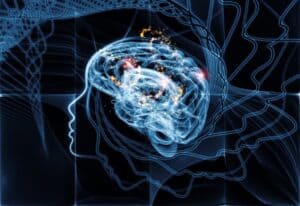
As I said, it’s challenging because there are a lot of gaps of nothingness. He tells you to do something, then there’s quiet, and then you forget that you’re meditating because the mind goes and does all kinds of weird things, but then he brings you back. It’s a process of getting you back. At least for me, it helps me be a less reactive human and a more present human.
When I was in India on a Platinum Partnership trip with Tony Robbins, he brought some oneness monks. One of the things they taught that was profound for me is that you’re not your body. You’re not your thoughts. You are a receiver of thoughts like an FM tuner.
If you take that on board, you’re much less likely to get triggered or indulged in thoughts that are not helpful or not of the light because you just recognize, “Oh, that’s not mine,” and then I send it to the light. I do that regularly because it’s a hygiene thing. It’s a spiritual energetic hygiene. My thoughts are not mine. That’s a weird envious thought about whatever, and I’m just going to send it wherever it originated from, to the light.
It makes sense, but it’s difficult to implement and do because we’re not trained that way. Especially in the Western world, we’re taught that we have a self. We’re taught that there’s this duality of life. Whether you’re on one side of the fence or the other on that, the ego gets involved and says, “No, these are my thoughts, this is who I am, these are my feelings, I feel this.”
Meditation is a practice. It’s something that you do to deal with the myriad of inputs that are coming at us.
It is very difficult for me when something bad happens not to fall right into that because it seems like we’re wired to think that way through this practice. Meditation is a practice. It’s something that you do every day. It’s not something that you get anything out of. It’s something that you do to deal with the myriad of inputs that are coming at us.
I tell my close friends and family that this path is not easy. When you become more aware and conscious, you realize that ignorance is much more blissful. It’s easier to prance around. Once you get into this process, you start observing yourself, observing what happens, and becoming more cognizant, conscious, and aware. You cannot unlearn that. Now you’re on the path, and it’s a difficult path. It is a challenging path.
The growth happens. What I like about Sam is that he brings that neuroscience aspect to it with his other work. We were living in very difficult times. We were living in such difficult times.
Our brains took about three million years to get the brains we have from our ancestors when they first started consuming a lot of animal protein. When you look at that timeline, it was 10,000 years when the agricultural revolution started. In just the last 50 years, our lives have changed so dramatically.
Our brain is not just developing new areas of cognition to deal with new social problems. Our brain is using the stuff that was developed thousands of years ago to deal with something that is brand new, like social media, bullying, the pressure of an economy, inflation, recessions, corporate pressures, the workplace, long hours, and all this stuff. If you’re not taking the time to unplug and observe those thoughts, feelings, emotions, and moods. No wonder mental health is a global problem today because our brain is not prepared to deal with all of that. It’s learning as it goes.
I have a 23-year-old, a 21-year-old, and a 19-year-old. They asked me, “Why are you doing all this?” It’s the only thing I’ve found that allows me to get out the door and tackle the world without it tackling me. It is the only thing that I’ve found so far.
Our brain is not just developing new areas of cognition to deal with new social problems. It uses the stuff developed years ago to deal with something new.
I’m prepared to find out tomorrow that it’s all wrong and that I must do something else. It is the only thing I’ve found so far: this neuroscience merger with ancient wisdom and finding routines that bring the two of them together so that I’m not out there just reacting to every impulse and every input that will inevitably come to me.
I feel bad. I don’t know your perspective since you’ve been to India. I’ve never had the opportunity, but I don’t subscribe to the idea that the younger generation has it easier than the oldest. It’s the other way around.
The younger folks born today with the same brain that our grandparents were born with are dealing with problems that our grandparents never had to. They’re dealing with social media. They’re dealing with this globalization. You know what’s happening in Ukraine instantly. You know what’s happening in Africa. You know what’s happening.
Yes, and it’s all bad news.
Exactly, because of the manipulation. Our grandparents didn’t have to deal with that. Maybe they worked a lot harder physically because they worked on a farm, but when they got home, it was quiet. There was not this constant fight for your attention, this war to get your attention. Look over here. No, look over here. This app, TikTok, and this and that. The brain can’t deal with that elegantly. It will take evolution a while before it catches up on how to do that.
These things we’re talking about now, meditation, using tools that give the body resilience, whatever those tools may be, is an absolute necessity in today’s world. It is necessary for our young people because they don’t know what they don’t know. They don’t know that they’re being manipulated directly or indirectly by the society surrounding them.
Yes, and the tools that they use daily. Something that is a very powerful thought experiment, which I’d invite you to try on, is if this world and all of reality is an illusion, not necessarily a simulation created by superhumans like Elon Musk might think, still more like an illusion, such as what you might learn about in Kabbalah. Hinduism refers to these illusory worlds as Maya and, in Buddhism, Samsara.

If that’s the case, that this is all an illusion, the only thing real here is love, God, then let’s take evolution and how long it takes for the brain to evolve, as you said, could be hundreds of thousands of years before there was a significant change in the way the human brain works, what if you don’t have that going on? It’s more like a computer program, but the angels, God, are manipulating your movie’s script in real-time. If they do that, they can also put into your movie script or simulation that this thing took millions of years to develop.
The book I’m reading that alludes to this is Kabbalah and the Age of the Universe. It’s by Rabbi Aryeh Kaplan. I’ve had so many glitches in the matrix that become very clear to me, at least from my perspective, and I’m not going to try and push my perspective on anyone else, but from my perspective, this is an illusion.
These things that happen to me defy logic, the laws of physics, etc. They are the glitch in the matrix in the movie, where, “Hey, I just saw that scene. I just saw that cat do the same thing twice. That’s weird.” I’m curious to hear your thoughts on that.
I am open to the idea. To tell you where I’m at, I am on the bandwagon of an illusion in the sense of what neuroscience says. The brain is very dark when you look at how our brain works and how our senses get translated into electrical stimuli. Nothing is going on. It’s not like it sees through the eyes. No, it doesn’t see. The eyes take whatever is out there, interpret it into electrical signals, and then the brain does this.
It’s called the dark cave.
It is a very dark cave. No light gets in there. The idea is a great book, A Thousand Brains by Jeff Hawkins, about creating a model of the world. That’s what the brain does. It makes a model of the world and then constantly updates that model.
If that is true, that model is being built directly from the senses that we have as humans. We have eyes, noses, ears, and so forth. What about the rest of the animal kingdom? They have different senses.
Some animals have much better eyes. Some animals have other senses that we don’t have. Some animals see farther in an electromagnetic spectrum of light. Others hear more and smell more. Some animals, like sharks, have an electromagnetic field that can sense things through electromagnetic waves.
If you get trapped by the hamster wheel every day, what happens is you don’t observe. You cease to be the observer of what’s happening.
When their brains take all that input, it creates a model of the world. That model of the world is very different than our model of the world, the model of the world of dogs, the model of the world of birds, and the model of the world of every other living sentient thing.
The only thing we can agree on is that we have one view of what we consider real. Even as you and I know as humans, the best thing we can do is agree. We can be subjective that the backdrop to where you are is green. We agree that it’s green, but how do you define green? When you put all that together, at least as evident to me that we are in an illusion constructed by our brain and constantly changing. That’s the starting point.
To take it to the level of what you explained, I have had discussions with folks about that, and I’m open to the possibility that there is more. When you start paying attention, you start seeing more of these glitches. Again, if you get trapped by the hamster wheel of every day, every day you got to work, you got to do this, you got to go workout, you got to feed the kids, you got to take them to the soccer game, got to do this, got to do that, what happens is you don’t observe. You cease to be the observer of what’s happening.
The moment you get into any kind of these practices, whichever they may be, and you start observing, you start seeing patterns. It is very easy for our minds to say, “Well, who’s creating the patterns? Is there something creating these patterns? Am I supposed to be observing?” I’m open to the possibility of what you just described that there’s yet another level of illusion beyond the biological or what neuroscience teaches us. Once you start truly observing what’s happening around us, it is easy to see that.
If this is a rabbit hole you’re interested in going down, I have a number of episodes that you can listen to while you’re in your hyperbaric oxygen chamber on psychic phenomena and paranormal stuff that I think will be quite interesting for you, like Tina Zion, Sheila Gillette, Mark Nelson, and Paul Selig. These are phenomenal, absolutely legit psychics and mediums who are very gifted.
We’re all psychic but don’t believe it, so we shut it out. A great book with an example of how to develop this is A Still, Small Voice: A Psychic’s Guide To Awakening Intuitions by Echo Bodine. That’d be another great one for the listener.
The brain makes a model of the world and then constantly updates that model.
We’re all psychic; we just shut that out because we don’t believe it. It’s like the old expression, “Seeing is believing.” It’s more believing than seeing. What you believe is what you see and create out of this reality.
What is your take—I’ll ask you because I have my own—along those lines on psychedelics? Have you had any guests that that’s their area of expertise?
I have had some guests on that topic, very strong proponents of it. I’ve never done any psychedelics myself, but one example of a guest in that area is Dennis Notten. He even is a proponent of microdosing ayahuasca, which I had never heard of before. I have heard of ayahuasca doing a ceremony and having a shaman, but to micro-dose it daily to the point where you don’t actively feel it. Still, it’s working in the background, which I thought was fascinating.
I have decided to try it this year. I’ve never done any drugs, but the research done by the experts out there is just so interesting and overwhelming, and then the parallels. They do their thing When they explore or monitor experts or power meditators like these monks that go into the mountains. They take the effects of psilocybin, for example, then see how their bodies react to it, and then they interview them and talk to them afterward. The similarities are just too much to ignore. I decided that this year, I will find a reputable place where I can be watched because I want to be in a safe place with professionals who know what they’re doing and see what kind of experience that brings.
There’s a very famous place in Costa Rica called Rhythmia. You could go there. I had Corin Grillo on this podcast. She’s a psychic and works with angels and so forth. We had a conversation not on the podcast but separately. I was curious to hear her take on plant medicines and so on.
She said that it’s much better to do it in a very small, intimate group, maybe just you and your partner, more even alone with the shaman rather than a group of people because you’re going to be so open that you might take on inadvertently some other people’s energies that don’t serve you. Best to not be in a group of strangers who have all differing backgrounds, belief systems so that you’re not absorbing that when you’re making your journey.
Good point. I definitely would do it alone.
If that intrigues you and you want to talk to Corin, I can contact her. You could give her a podcast interview first to see if she resonates with you, and then you can get her and see if she’ll be fit to take you on that journey.
Thank you. I would look into that.
Awesome. I want to read something short to you, and I want to get your take on it. It’s been profound for me. I’ve been reading it ever since I got this. It’s a one-page sheet. I got it from Dr. Kirby Hotchner, a guest on this podcast. It encapsulates this human experience in a very deep way.
Your thoughts are not yours alone. Your mind is merely a conduit for thoughts. Share on XI’ll read it to you and want to hear your opinion. It is only knowing the truth that will set you free. The truth is that ‘I’ is your true identity, and at the center of your being, that ‘I’ is God, infinite individuality, and your only reality. This has to be fully accepted and rooted in your consciousness through daily practice and opening the eye of your being to receive its grace. Also equally important is that everything else you perceive and experience, whether it enters your mind consciously or unconsciously, is a universal mesmerism formed by the world’s belief in two powers, good and evil.
This occurs from the time of conception. Everything you are told, hear, see, and all that arrives from all the world’s thoughts flood into the mind daily from all those that have ever existed. Universal beliefs like birth, death, disease, evil, poverty, aging, et cetera, the eye that you are is eternal, unchanging, immortal, and is your and everyone else’s soul, mind, consciousness, self, life, and the substance of all forms. It is God manifesting as an individual self infinitely.
As we meditate on this daily, accept it, practice it, and live it. It will eventually become our realized awakened state of consciousness. That will dissolve all sense of separation from God and all the universal hypnotic appearances of the world’s beliefs constantly bombarding your mind.
There’s a lot there. Very interesting. I struggle a little bit with the concept of ‘I.’ Right now, I’m reading several books on both sides of that fence: “Do we have a self, or is this self also part of the illusion?” I haven’t made up my mind about it. Sometimes I think that the concept of self is an illusion, and then sometimes I’s like, “No, it’s not.”
If you’re at the right observation point, all you see is unity.
There’s a lot there that I can agree with: if you’re in the right point of observation, then all you see is unity. We are all one. We are all part of the same thing that is observing itself through us; call it God, the universe, or whatever the case may be. It’s interesting that the author sees that but uses I forcefully as an individual.
Here’s what I think he’s referring to. The author of this is Joel Goldsmith. My understanding of what he’s referring to by the I is the biblical term, I am. The I am is God. It goes beyond personality and all the illusions to the infinite. That’s my understanding of it. If you’ve heard of that term in the biblical sense, I’m pretty sure what he’s referring to.
So then, is I everything?
Yeah. Anything that you could describe with adjectives is almost irrelevant because it’s so much deeper than that. It is everything. It is everything and nothing. It’s indescribable. It is beyond comprehension. It’s all that is.
It’s just like Dao De Jing. The Dao that can be named is not the Dao. I used to be a very religious person. I’m no longer a religious person, I’m more of a spiritual person. To me, the concept of God is a useful tool created in our minds to explain the unexplainable.
If God to you is more of a concept, a useful framework, do you have experiences or a personal relationship with God where you can hear his voice and experience his unconditional love, or is it more about esoteric knowledge and not that personal relationship or experience?
To me, the concept of God is a useful tool created in our minds to explain the unexplainable.
No, it is. I do have a personal relationship. It’s not in feelings, in passion, about living, and how that permeates the other parts of my life. I just don’t see it in the structure of the various religions that mankind has created over time.
To go back to what you read, Dr. Wayne Dyer, I don’t know if that name rings a bell, but I’m still a big fan of his. He passed away. He had a way of explaining things that were just like, it just clicked.
Talking about the ‘I’ reminded me immediately of Dyer talking about the ocean. He had an example. It was like if you go to the beach and see the ocean in all its power and majesty, it’s a force. It’s powerful. It gave life to us.
If I go to the beach, I take a glass, I take water from the ocean into that glass, then I bring it home, and I sit it on the counter. Is that the ocean? Chemically speaking, yes. You got all the compounds and everything. It’s got salt, all the minerals, and everything in the ocean, but it’s not the ocean because it’s been removed from it. Now it doesn’t have any other power, it doesn’t have any waves, and it doesn’t have any other life-giving capabilities. It’s been separated from it.
When you take it back and dump it into the ocean, it regains all the properties, life-giving, power, and strength, et cetera, et cetera, et cetera. I resonate with the idea of the I as you described it, the I as the indescribable I. Everything, but also nothing, and anything in between. That is where we can truly see through all lenses.
That is where our brains no longer dictate that model of reality because that model of reality is limited. We know that because our flesh limits it. It’s limited by how our brains are wired. The reality I see is different from yours because we have different backgrounds. But when you transcend beyond that, you see everything and nothing simultaneously.
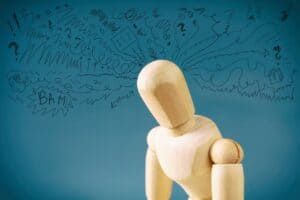
That is why I’m no longer an institutional religious person because religion has to have four elements. One of them is propagation, the ability to propagate, a process that people get taught so that it lasts time. It has to have a set of rules. After all, we needed them because people back then were killing each other senselessly. We’re not now but much better today than 2000-4000 years ago. It has to explain why the world is the way it is.
“Where are we? Where do we come from? Where are we going?” But it has one more element, which is, in my mind, the most important one, and it has to teach how to transcend to how to go from where we are, what we see, what we touch, and what we feel, to that place of what you described as the I, as the everything.
One thing I’ve learned because I had a very similar perspective about spirits—I’m spiritual, not religious and so forth—not that I would say I’m religious now, but I’m much more respectful and appreciative of the gifts that are inside of various religions, the wisdom, the tools, and the insight.
For example, in the book of Isaiah, Isaiah is at the feet of God, saying, “Here I am, Lord, please send me.” I use that regularly, imagining myself at the feet of God, volunteering to deliver his miracles, and then the most amazing, seemingly unbelievable if you’re a materialist, things come to pass, one in a trillion chance type situations, where I get to deliver God’s miracle and makes a life-changing difference for the person. That’s an incredible gift. I was never really a big Bible reader or anything, but that little piece from the book of Isaiah has changed my life.
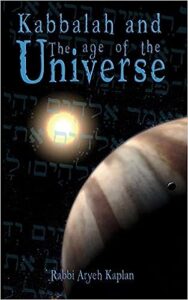
I’m 100% in agreement with you. I always find beauty, truth, and wisdom in the various scriptures, whether it’s the Bible, Hinduism, Buddhism, etc. There is beauty, truth, and wisdom in all. I appreciate the potential effect that it can have on people and the positive potential effect that it can have on people.
Also, like you, I have excerpts of the Bible specifically that are in my mind. One of them is in the New Testament when Jesus says, “Be in the world, but not of it.” To me, that is the example. That is right there. That’s why I meditate.
That’s why I do what I do because I don’t believe. In the past six years that I’ve embarked on this journey of self-discovery, self-scrutiny, self-evaluation, and self-observation, I’ve met various people from different walks of life. Still, they’re all trying to converge into becoming more aware, conscious, and less reactive.
I met some folks whose answer to what’s happening inside them and what’s happening outside of them is, “I’m going to sell everything, I’m going to go to Bali, live there, then just chant on the beach, dance around, eat wonderful food, and just completely disconnect from the world. Great, but that’s not me. I can’t do that. I’m a social being. I’m not the guy going to go to the top of a mountain like these monks, just stay there and not talk to anybody—more power to them. There is a purpose in doing that. That’s great, but I need to be in the world.”
We live in a world of action. You’re missing the point if you observe without manifesting your creativity and benevolence.
I agree. Again, I don’t criticize. If that’s what people need, then that’s great. But I need to be able to scrutinize myself. I need to be able to evaluate myself. I need to be able to wake up every day, just like you said in the intro, to unlearn, relearn, and learn the new, then take that and use it, and hopefully inspire other people to do not the same, but to find their way, to find their path, to find their approach to being less unconscious and less unaware.
The more aware we become, then the more that unity manifests itself. The more that ‘I’ you described becomes self-evident to more people, and that’s how we get beautiful things done.
Speaking of the ‘I Am,’ to contrast that with the egoic ‘I,’ I learned this from Gary Ng. I met him through Tony Robbins Platinum Partnership. He says there are three types of self. There’s the egoic self, there’s the observer self, and then there’s the higher self. That helps me to put things in perspective.
Absolutely. I keep that in mind, especially when bad things happen, something happens, or somebody mistreats you or mistreats you in your eyes. It’s like, “What part of me is reacting to this stimulus? Am I under attack? Am I in danger? Why is my heart rate going up?”
Breathe, slow down, and take it for what it is.
Why am I getting flushed in the face? These are all psychosomatic, biological responses to being under physical attack, but I’m not. Breathe, slow down, and take it for what it is. This person doing something to you has a reality that does not agree with yours. They have something going on electrically in their brain, which has nothing to do with you. This is precisely why I meditate, to do that in real-time without losing it.
Another way to look at it is if this person is in my movie, my simulation, my illusion, there must be a purpose and a reason. I’m on Earth School to learn something and to grow and evolve. “Why is this person in my movie right now?” I love that question. It’s such a powerful question. Anytime somebody cuts you off on the freeway, says an unkind word, or does something bizarre that might trigger you.
I had a mentor a long time ago. He’s a wonderful man. He died way too young. He was a priest who happened to be a student of my mother when he was in high school. He ended up, again by some sort of pattern, to become the priest at our parish. We lived in Panama. We became good friends.
At the time, he trained me so that I could teach Catechism. I was young, I was 18 years old, but he wanted me to work with young people, as a young person myself to work with young people. He used to say, “When God wants to get your attention, he’ll throw a leaf in your head so that you stop what you’re doing and pay attention. If you don’t pay attention, then he throws a small pebble. He throws a bigger rock if you don’t pay attention.”
If you don’t pay attention, he’ll throw you a brick. Eventually, it’s a boulder. At some point, you’re like, “Well, why is all this happening?” He’ll say, “Well, you’re not paying attention. You need to pay attention. Turn around. You’re going the wrong way. Go in this direction. I’ve been trying to get your attention.”
Until the lesson is learned, you’re still repeating the grade. You stay in fifth grade until you pass, then go to sixth grade. If you are unwilling to learn sixth grade, you will stay in sixth grade.
Even in multiple lifetimes.
I tell this to my kids sometimes. They’re young, and they’re living their lives. I love them, and I’m proud of them. But they don’t like when I get into my rants and start talking about these things, which I understand. I say, “Look, you have to go through this process.”
Pay attention to who’s asking and why because the answer will be self-evident.
Pay attention to that question when you ask why this is happening to me. Pay attention to who’s asking and why because the answer will be self-evident. This is happening to me because there’s something I was supposed to learn from this that I haven’t learned. Until I learn it, it is going to continue to happen.
It’s like relationships. When you see people who walk into a relationship with a person, things go wrong, and then they go date somebody else, a different version of the same person they were before, and then they go to the next person. Looking at all of them, it’s like, “Well, it’s the same person. They’re just in different bodies.” You didn’t learn the lesson. There’s something to be learned through observations so the next person you find doesn’t have the same characteristics that clash with you.
Again, we keep coming back to it. It’s beautiful that we’ve gone in different directions in this conversation. Still, it goes back to that process of self-observation and what tools I can use to observe myself better, my inner self, and what’s happening around me.
Speaking of the inner self, that’s where infinity is. Science will tell you it’s out there in space. It goes on forever. There are trillions of stars, and so forth. But infinity, when you realize that, hey, this is an illusion, this whole thing’s an illusion, then the true infinity is inside. It’s within you. That’s where you can go infinitely and get lost in a good way in the present.
I like that. I have a phrase that I tell my kids. Observe the world outside of you and then observe the universe within because what’s in it, it’s far greater than anything you can perceive with the senses. We’re definitely in alignment there.
Awesome. This has been a really fun conversation and inspiring, I’m sure, for our listeners. If our listener wants to work with you and get to that place of expanding their consciousness, improving their health, making a bigger difference in the world, and feeling and living better, “How did they get in touch? How did they work with you?”
They could go to my website, conarium.com. I have my email there, and my podcast is there. I started a new podcast since we spoke. Since we met, I started a new podcast. You can find me there.
By the way, you would appreciate this, but the word Conarium is Latin for pine cone. The pine cone, when I was looking for a name for a company, I wanted something that was scientifically sound but also filled with ancient wisdom. The pine cone is the element of the pineal gland, which has plenty of ancient wisdom and religious and spiritual connotations but is also part of the endocrine system.
It is a key element in our well-being. It regulates melatonin and other hormones, so I found that to be a beautiful bridge between where I want to live. I want to live in the beautiful overlap of ancient wisdom and modern science and use that. You can find me at conarium.com. I’m happy to connect.
Awesome. Thank you, Rafael. Thank you, listener. Go out there and reveal some light in the world, improving your vessel, health, wellness, and happiness. We’ll catch you in the next episode. In the meantime, have a fantastic week. I’m your host, Stephan Spencer, signing off.
Important Links
Connect with Rafael Andrade
Books
Businesses/Organizations
People
Previous Get Yourself Optimized Episodes

